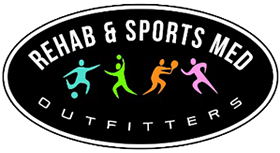Physical Therapy is vital when it comes to successful outcomes following a Total Knee Replacement. Patients usually begin therapy 48 hours after surgery. With any surgery, some degree of pain, stiffness, scar sensitivity, and swelling can be expected. The following products are used to help limit these post op symptoms!
ACTIVEWRAP KNEE
The ActiveWrap Knee wrap is a great choice in combatting stiffness and swelling because it can be used as either an ice or hot pack. The inserted packs can be thrown in the freezer or heated in the microwave for the desired effects! The wrap can also be tightened to allow for low grade compression to help alleviate swelling. When you purchase the ActiveWrap, you are basically getting a two for one professional grade product making it an economical choice as well.
CRAMER ESS KNEE COMPRESSION SLEEVE
This durable knee sleeve provides a subtle support to the patient while allowing ease of movement. The light compression allows freedom of movement while decreasing swelling which helps foster pain free exercise. It has a unique knitted design which is lightweight and allows for exceptional stretch. The sleeve does not have any seams which is important in avoiding chaffing and painful pressure points.
The KneePro Exerciser
This innovative device provides a portable, INEXPENSIVE, and simple system to exercise the leg following Total Knee Replacement. It's ease of use coupled with its effectiveness is a fantastic product when trying to regain your knee flexion and extension following surgery. The video below demonstrates the incredible ease of use along with instructions on how and when to use the KneePro correctly!

